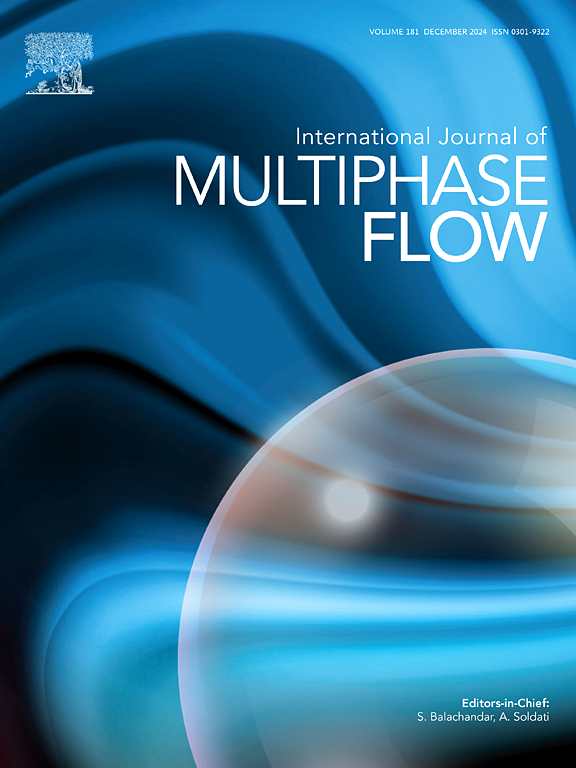Lagrangian modelling of direct mixing gas phase hetero-agglomeration in turbulent pipe flows
IF 3.8
2区 工程技术
Q1 MECHANICS
International Journal of Multiphase Flow
Pub Date : 2025-09-18
DOI:10.1016/j.ijmultiphaseflow.2025.105458
引用次数: 0
Abstract
Hetero-agglomeration, the functional mixing of particles of different materials, has the potential to yield novel and remarkable properties in dispersed products. As a broader process understanding for hetero-agglomeration especially in the gas phase is missing an exemplary process involving mixing, agglomeration and deposition of small particles () as part of a turbulent pipe flow was considered as part of this study and was numerically investigated. The utilized modelling employed an improved discrete random walk model for Lagrangian particle tracking and a stochastic agglomerate structure model. The obtained simulation results demonstrate a pronounced dependence on the configurations of three considered initial particle distributions (uniform, laterally offset, and radially offset) across six pipe diameters (8-13 mm). Notably, the interplay between deposition and agglomeration led to local maxima in agglomerate number and hetero-contacts. The ratio of hetero- to homo-contacts is pipe diameter-dependent, due to the combined effects of mixing and the outcome of collisions, which is influenced by the turbulent intensity and the material properties. The selection of pipe diameter and mixing configuration has a significant impact on the size and composition of hetero-agglomerates, which has to be considered when designing gas phase hetero-agglomeration processes.
湍流管道流动中直接混合气相异团聚的拉格朗日模型
异团聚,不同材料的颗粒的功能混合,有可能在分散产品中产生新的和显着的性能。由于对非均匀团聚的更广泛的过程理解,特别是在气相中,缺少一个典型的过程,涉及小颗粒(0.3<dp<2.5μm)的混合,团聚和沉积,作为湍流管道流动的一部分,被认为是本研究的一部分,并进行了数值研究。该模型采用改进的拉格朗日粒子跟踪离散随机游走模型和随机团块结构模型。所获得的模拟结果表明,在6个直径(8-13 mm)的管道中,三种初始颗粒分布(均匀、横向偏移和径向偏移)的配置明显依赖于颗粒分布。值得注意的是,沉积和团聚之间的相互作用导致团聚数量和异质接触的局部最大值。由于混合和碰撞结果的综合影响,混合和碰撞的结果受湍流强度和材料性质的影响,异质接触与均匀接触的比率与管径有关。管径和混合构型的选择对异质团聚体的大小和组成有重要影响,在设计气相异质团聚工艺时必须考虑到这一点。
本文章由计算机程序翻译,如有差异,请以英文原文为准。
求助全文
约1分钟内获得全文
求助全文
来源期刊
CiteScore
7.30
自引率
10.50%
发文量
244
审稿时长
4 months
期刊介绍:
The International Journal of Multiphase Flow publishes analytical, numerical and experimental articles of lasting interest. The scope of the journal includes all aspects of mass, momentum and energy exchange phenomena among different phases such as occur in disperse flows, gas–liquid and liquid–liquid flows, flows in porous media, boiling, granular flows and others.
The journal publishes full papers, brief communications and conference announcements.

 求助内容:
求助内容: 应助结果提醒方式:
应助结果提醒方式:


